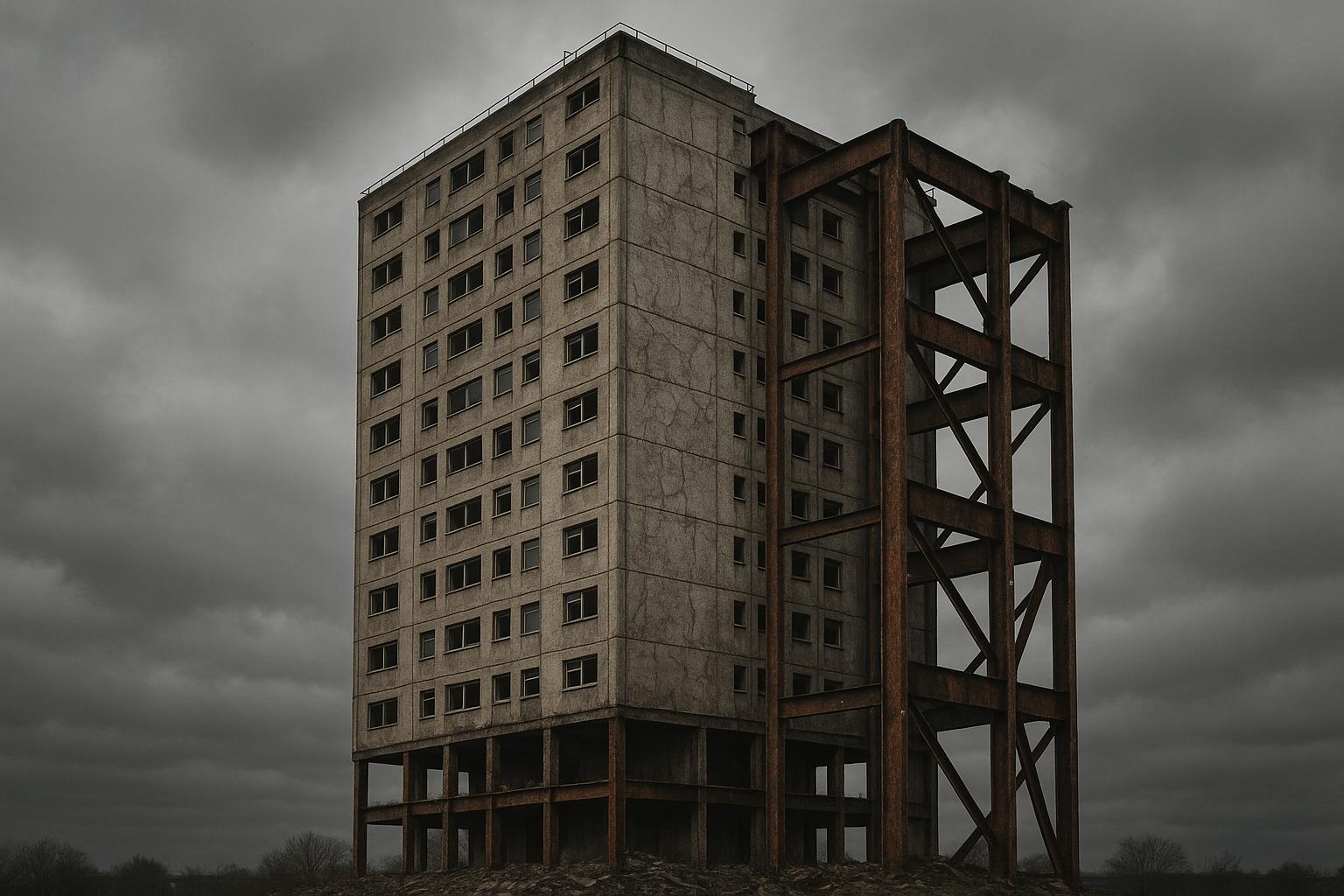Councillors in a yet-to-be-named city face a pivotal decision regarding the future of two distinctive 75-flat tower blocks, with a committee meeting scheduled for December to determine the next steps. The city’s Housing, Homelessness and Fair Work committee will consider a report highlighting a substantial increase in the estimated costs of retrofitting these blocks, from an initial figure of £51.4 million to an escalating £86 million. This sharp rise is attributed to unforeseen complications stemming from the unique architectural design of the buildings. The council has drafted a variety of proposals ranging from scaled-back repairs to outright demolition and replacement with new residential buildings.
The blocks, Inchmickery Court and Oxcars Court, have already seen partial tenant decants in anticipation of the refurbishment, with 50 tenants relocated from Inchmickery Court and plans underway to move the remaining residents, as well as the 68 tenants in Oxcars Court. Officers are contemplating accelerating the decanting process early next year to reduce ongoing maintenance costs. The retrofit plans were designed to address damp issues and improve energy efficiency, alongside essential mechanical, electrical, and plumbing repairs. However, a council officer at a recent briefing stated that the challenges faced with these particular towers are unique and not reflective of the broader multi-storey housing stock owned by the council.
The report under review offers several potential pathways: scaling back the retrofit to £57 million, restricting works to crucial repairs at £13.6 million, or demolishing both blocks to erect new six-storey buildings that would increase the number of flats to 150 at an estimated £48 million. These options reflect the complexity and costliness of specialised repairs to the buildings’ steel framing and other unique structural elements—a situation intensified by a lack of competitive bids for the required specialist contractors.
The timeline of events shows that the retrofit initiative gained momentum in August 2022, with residents initially supporting the decant and renovation plan when consulted in September 2023. By January 2025, decants commenced at Inchmickery Court, and project designs were largely completed by February. However, by March, it became clear the original budget was unfeasible, prompting cost-saving evaluations. Since then, councillors have been gradually briefed, and tenant information sessions are planned to communicate ongoing developments and potential demolition proposals.
This council’s predicament aligns with a broader UK trend, where local authorities are increasingly considering demolition and rebuilding of tower blocks due to financial, structural, and safety pressures. In Glasgow, for example, three 1960s tower blocks at the Wyndford estate were demolished in March 2025 to make way for nearly 400 new homes, illustrating a push toward regeneration rather than costly refurbishments. Similarly, Leeds City Council has recently approved the demolition of six high-rise buildings deemed past their design life, citing prohibitive investment required for refurbishment. These cases echo the complex considerations councils face in managing aging social housing stock built in similar eras.
Further afield, Brighton and Hove City Council has faced safety-related demolition decisions, with eight tower blocks recommended for replacement following structural assessments identifying failings that compromise fire and explosion resistance. These actions illustrate the ongoing challenges for local governments in balancing safety, cost, and tenant welfare. The Brighton council has committed to supporting tenants through relocation, an issue likely pressing for the city where these two towers stand, especially given the already underway tenant decant.
The financial and operational challenges linked to specialist repair contractors, as well as the growing cost estimates, underpin the council’s consideration of demolition as a potentially more viable long-term solution. The debate is not merely about buildings but about housing quality, safety, cost efficiency, and tenant stability, reflecting a delicate balance local government must strike amid rising refurbishment costs and evolving housing standards.
📌 Reference Map:
- Paragraph 1 – [1]
- Paragraph 2 – [1]
- Paragraph 3 – [1]
- Paragraph 4 – [1], [2], [4]
- Paragraph 5 – [1], [5], [6], [7]
Source: Noah Wire Services
